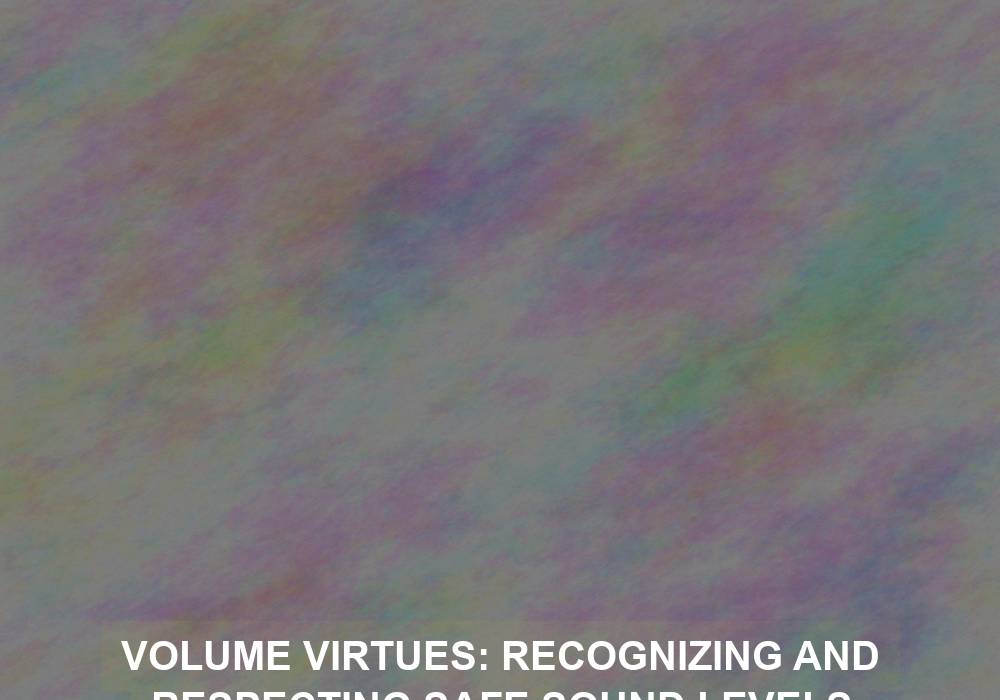In today’s fast-paced world, we find ourselves constantly surrounded by various sources of noise. From the bustling city streets and crowded offices to concerts and personal electronic devices, sound has become an integral part of our daily lives. However, it is essential to recognize and respect safe sound levels in order to protect our hearing health and overall well-being. In this article, we will explore the importance of understanding sound levels, their potential effects on our hearing, and provide practical tips to safeguard ourselves from excessive noise exposure.
The Impact of Sound Levels on Hearing
Sound is measured in decibels (dB), which is a unit used to quantify the intensity or loudness of a sound. Different sound sources emit varying levels of decibels, and prolonged exposure to high levels can lead to irreversible damage to our hearing.
Recognizing Safe Sound Levels
To better understand safe sound levels, it is crucial to be aware of the recommended exposure limits set by experts in the field. The Occupational Safety and Health Administration (OSHA) advises that exposure to noise levels above 85 dB for an extended period can lead to hearing loss over time. Additionally, the World Health Organization (WHO) suggests that personal audio devices should not exceed 85 dB as well.
When it comes to specific situations, it is helpful to know the decibel levels associated with common sounds:
- Normal conversation: around 60 dB
- Busy traffic: approximately 70 dB
- Lawnmower: about 90 dB
- Concerts and live music events: can reach levels of 110 dB or higher
By familiarizing ourselves with these levels, we can make informed decisions about protecting our hearing in various environments.
Effects of Excessive Noise
Exposure to excessive noise levels can have several adverse effects on our hearing health. These include:
- Temporary Threshold Shift (TTS): Temporary hearing loss experienced after exposure to loud noises, which may subside after a period of rest. However, repeated occurrences of TTS can contribute to permanent damage.
- Permanent Threshold Shift (PTS): Prolonged exposure to high sound levels can cause permanent damage to the delicate structures within our ears, resulting in irreversible hearing loss. This can significantly impact our quality of life and ability to communicate effectively.
- Tinnitus: Prolonged exposure to loud sounds can lead to a persistent ringing or buzzing sensation in the ears, known as tinnitus. This condition can be disruptive and distressing, affecting concentration, sleep, and overall well-being.
It is crucial to be mindful of the potential long-term consequences of excessive noise exposure and take proactive measures to protect our hearing.
Protecting Hearing Health: Practical Tips
Now that we understand the potential risks associated with excessive noise exposure, let’s explore some practical tips to protect our hearing health and ensure a safe sound environment.
Use Ear Protection
One of the most effective ways to safeguard our hearing is by using appropriate ear protection. Consider using earplugs or earmuffs in high-noise environments such as concerts, construction sites, or when using power tools. These devices help reduce the intensity of sound reaching our ears, minimizing potential damage.
Limit Exposure Time
It is crucial to limit the duration of exposure to high sound levels. If you find yourself in a noisy environment, try to take regular breaks in quieter spaces to give your ears a rest. Additionally, if you enjoy listening to music through headphones, adhere to the 60/60 rule – keep the volume at 60% and limit listening time to 60 minutes per day. By implementing these practices, we can significantly reduce the risk of hearing damage.
Maintain Distance from Loud Sources
When encountering loud sound sources, try to maintain a safe distance. By increasing the distance between yourself and the source, you can significantly reduce the intensity of sound reaching your ears. For example, at concerts, standing further away from the speakers can help mitigate the impact of high volume levels.
Be Mindful of Everyday Noise
While we might not always have control over external noise sources, it is essential to be mindful of everyday noise that we expose ourselves to. Avoid excessively loud TV or music volumes, and consider using noise-cancelling headphones as a way to block out background noise, allowing you to listen at a lower, safer volume. Creating a quieter environment in our daily lives can contribute to our long-term hearing health.
Educate and Raise Awareness
Educating others about the importance of recognizing and respecting safe sound levels is crucial in creating a safer sound environment for everyone. Share this information with friends, family, and colleagues to promote hearing health awareness. By spreading knowledge and encouraging responsible sound practices, we can collectively work towards preserving our hearing and the well-being of those around us.
Conclusion
Recognizing and respecting safe sound levels is paramount for preserving our hearing health. By understanding the potential risks associated with excessive noise exposure and implementing practical tips to protect our ears, we can ensure a healthier and more enjoyable auditory experience. Let’s all strive to create a world where we appreciate the volume virtues and prioritize our hearing well-being.
